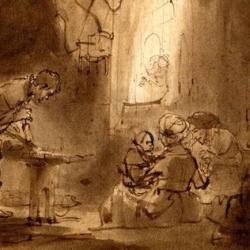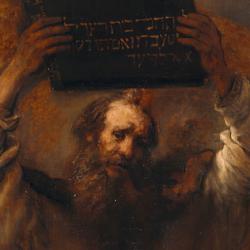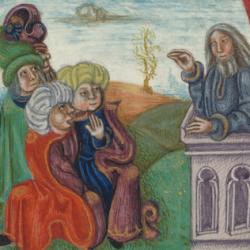All the rites of Israel’s sacrificial system move from outside in. When a priest offers a purification offering for himself or for all the people, he slaughters the animal in the courtyard before bringing its blood into the holy place (Leviticus 4). When the high priest performs the rites of the Day of Atonement, he again moves from the outer court on the east toward the inner sanctuaries in the west (Leviticus 16).
The descriptions of the sanctuaries, though, move in the opposite direction. In Exodus 25–31, the furnishings of the tabernacle are described in this order: ark of the covenant (most holy place), table and lampstand (holy place), curtains (covering most holy place and holy place), bronze altar (courtyard). Then it describes the vestments of the priests and the ordination rite before turning back to describe the golden altar in the holy place.
The description of Solomon’s temple in 1 Kings 6–8 is interrupted by a description of Solomon’s palace complex, but the arrangement of the temple furnishings is similar to Exodus: first two monumental cherubim (most holy place), the paneling of the nave (holy place), the pillars at the doorway of the temple, the sea and water chariots (in the courtyard).
The sanctuary plans, in other words, are described from Yahweh’s perspective, radiating from the axis mundi in the most holy place outward to the courtyard. In this as in other ways, the sanctuary plans follow the order of creation: First God creates His own heavenly throne room, then organizes earth; first Yahweh plants a garden-sanctuary east in Eden and then He brings the man into it.
(Thanks to Dave Shaw and Pastor Jimmy Gill for discussion of this pattern.)














